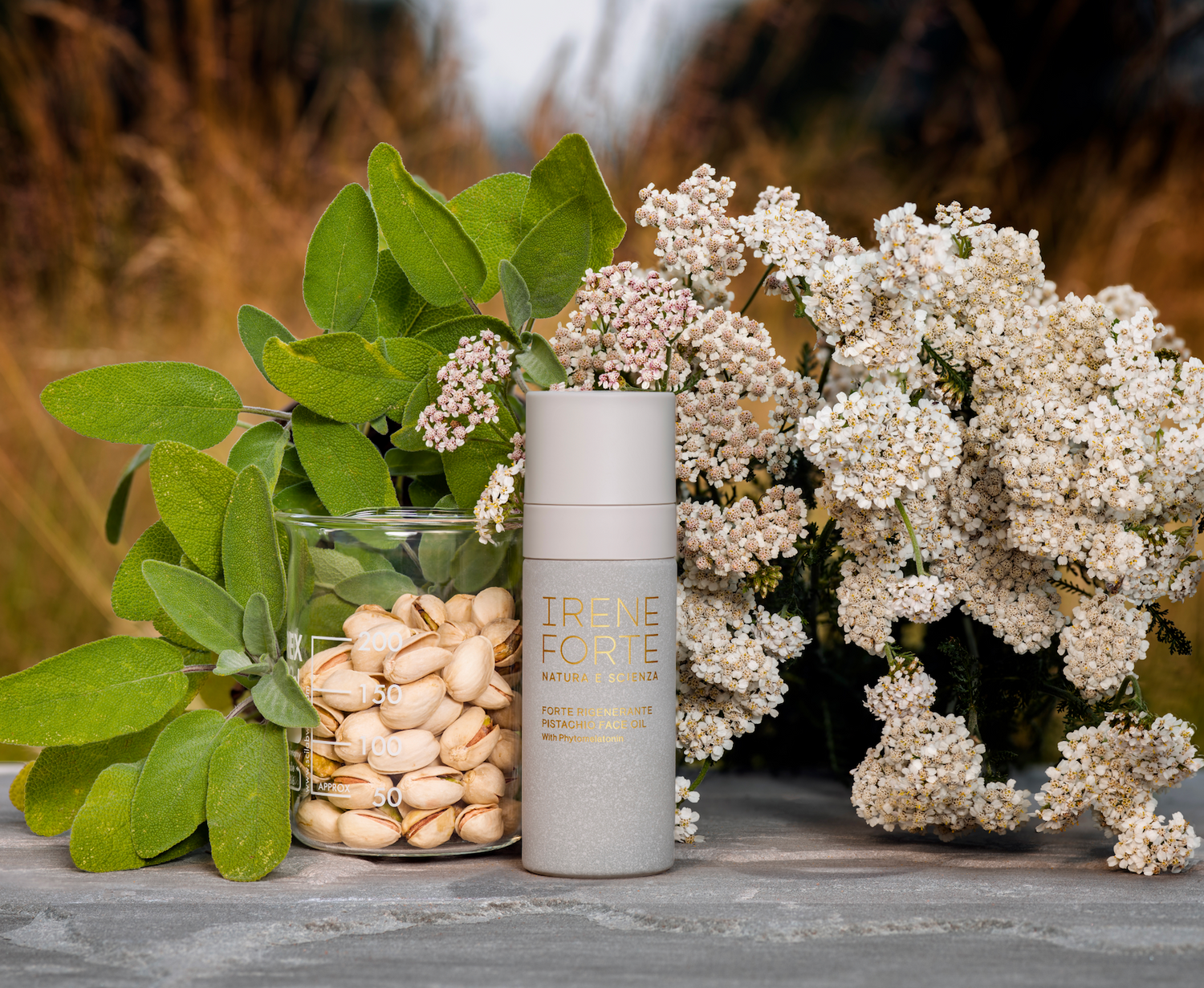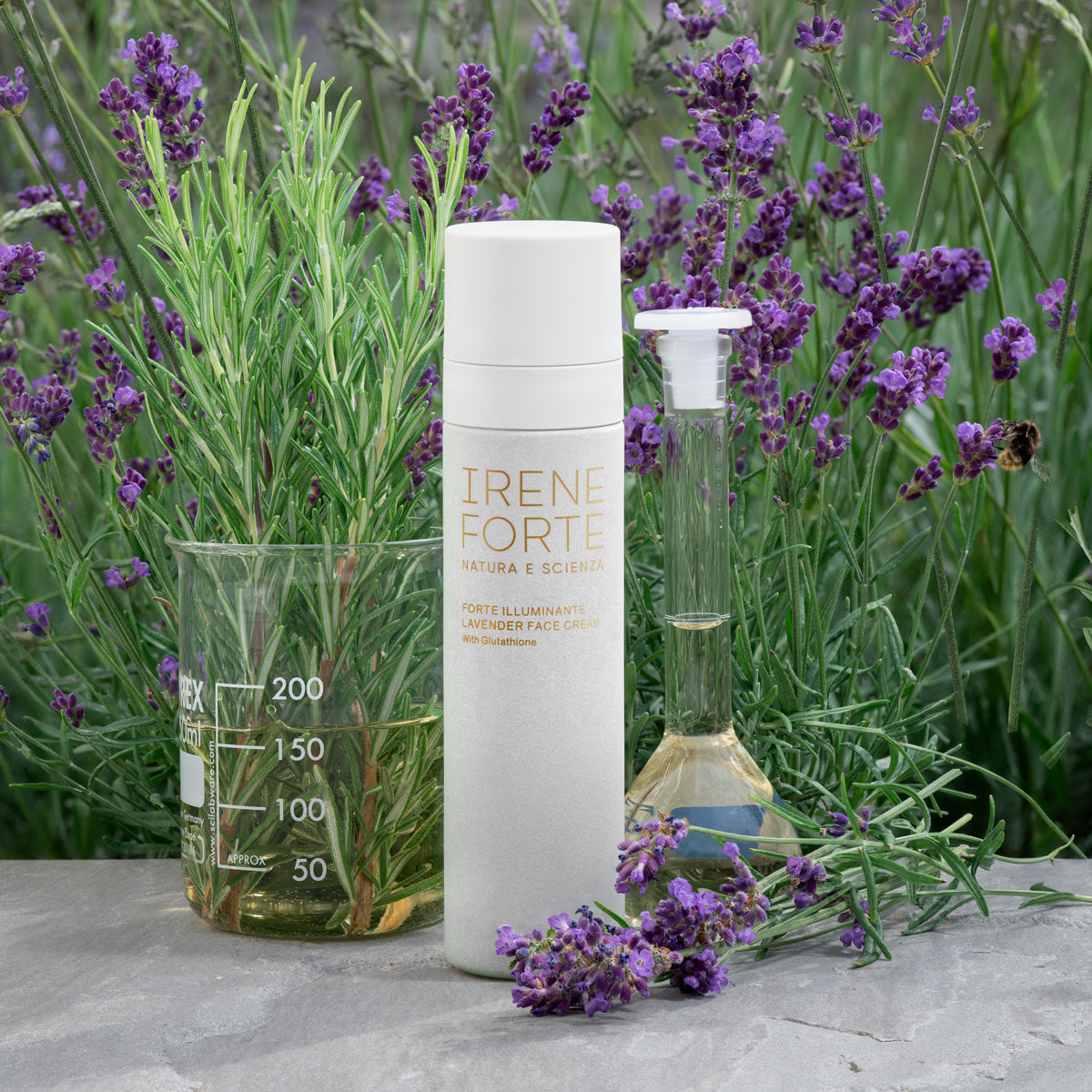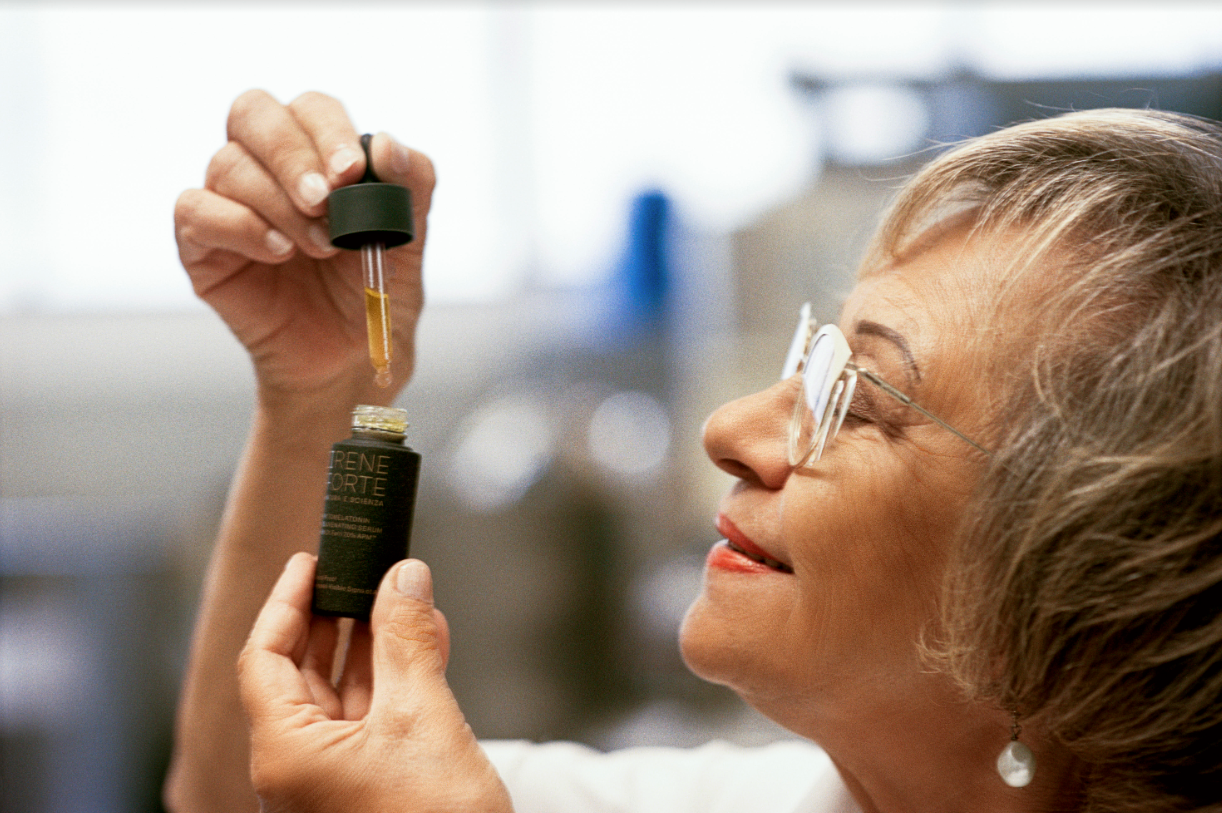What is rosacea?
Rosacea is a chronic skin disease that predominantly affects people with fair skin, hair and eyes (but it is not limited to this type). Even though it’s not 100% clear what causes it, it’s more likely to occur in people who:
- Had acne;
- Have capillary/ blood vessel problems;
- Have a family history of rosacea;
- Have an unhealthy lifestyle.
However, it can also be caused by bacteria and mites.
Rosacea’s trademark symptom is small, red, pus-filled bumps on the skin that are present during flare-ups. Typically, rosacea affects the skin on the nose, cheeks, and forehead, but it can also extend to the eyes and chest. Flare-ups often occur in cycles. This means that you will experience symptoms for weeks or months at a time, the symptoms will go away, and then they will later return again. There's currently no cure for rosacea, but you can certainly control and even improve the symptoms.
There are four subtypes of rosacea, aren’t there?
Yes, and each subtype has its own set of symptoms. It’s also possible to have more than one subtype of rosacea at a time.
- Subtype one, known as erythematotelangiectatic rosacea (ETR), is associated with facial flushing and with a stinging and burning sensation for more than 10 minutes after exposure to stimuli. Common stimuli include emotional stress, hot drinks, spicy foods, exercise, alcohol, and temperature changes.
- Subtype two, papulopustular (or acne) rosacea, is the most common type of rosacea, and is often associated with acne-like breakouts. It's also likely to be accompanied by subtype one-style skin irritation.
- Subtype three, known as rhinophyma, is characterised by a large, red, bumpy or bulbous nose. This is a severe subtype that usually requires an operation to be treated.
- Subtype four, known as ocular rosacea, typically involves red, itchy, dry and irritated eyes.
Focussing on the first two subtypes, as they’re the most relevant to skin, what kind of skincare would you recommend to help control symptoms?
Generally, daily use of ingredients that nourish, hydrate and protect the skin are very important for rosacea. I would opt for clean skincare that isn’t harsh on the skin; I would also avoid essential oils which can irritate the skin due to the allergens they contain. Look for products with ingredients like Hyaluronic Acid, Niacinamide B3, Panthenol B5, Ceramides, Allantoin, and even plant and flower extracts such as Aloe Vera and Helichrysum.
Could you share an appropriate skincare routine?
Start your routine with a gentle cleanser; this is very important to help remove bacteria and any leftover UV filter. The Almond Cleansing Milk is perfect for this. It’s rich in Vegetable Protein Complex and Aloe Leaf Juice to help hydrate, calm and soothe, while the Wild Rose Oil, Sweet Almond Oil and Shea soften and nourish.
The next step is always a toner. Here, I would recommend the Helichrysum Toner. Helichrysum Flower is known as a natural remedy for rosacea due to its healing qualities. This toner also has Allantoin and Pro-Vitamin B5 which are great to soothe the skin. With the Hyaluronic Acid, the product is also very hydrating. Hydration is very important to help fight bacteria and reduce inflammation.
As a serum, I would say the Hibiscus Serum all the way. This contains a multi-molecular weight of Hyaluronic Acid, vital for hydration. It also contains a Ceramide Complex which protects the skin, is anti-inflammatory and prevents moisture loss.
Next, I would suggest the Olive Eye Cream. The Niacinamide B3 in it is anti-inflammatory. This product also contains ingredients such as Pro-Vitamin B5 and Hyaluronic Acid to replenish, soothe and hydrate.
As a next step, the Aloe Face Cream, the Prickly Pear Face Cream and the Hibiscus Night Cream all work well for rosacea.
Now, onto peels, and masks… To improve rosacea symptoms over time, it’s important to renew the skin and build collagen. This can be done with products that contain Alpha Hydroxy Acids, Polyhydroxy Acids and even Azelaic Acid. I would not recommend using acids every day, but I would recommend trying them once a week. For this, the Apricot Penta-Acid Polish is fabulous (rich in AHAs and a PHA), and you can follow with the Lavender Tetra-Acid Mask (rich in AHAs and Azelaic Acid).
Daily sunscreen use (SPF30 or higher with UVA/UVB filter) is also incredibly important.
What treatments would you recommend for rosacea?
I would recommend having a regular facial (at least monthly) for sensitive skin. During this facial, I would avoid using anything that is too hot or too cold, e.g. instead of using hot mitts, use warm/tepid or cool cotton pad. This is also a great tip for when you apply products at home.
I also recommend lymphatic drainage massage on the face, to help drain lymph (toxins), reduce puffiness and soothe the skin.
In some cases, procedures such as laser and intense pulsed light (IPL) treatment may be helpful to treat symptoms. These involve beams of light being aimed at the visible blood vessels in the skin to shrink them and make them less visible. However, I would recommend that this is really done at the right clinic with someone you trust.
How does diet and lifestyle contribute to rosacea?
Some factors can increase blood flow to the surface of your skin and aggravate rosacea symptoms.
In terms of diet, experts recommend limiting the following foods: spicy foods, hot foods and drinks, cheese, alcohol, and caffeine. However, the following foods are recommended:
- Fruits and vegetables: leafy greens and orange or yellow fruits contain carotenoid phytonutrients, which help naturally fight sun damage and reduce inflammation.
- Healthy fats: coconut oil, fish oil, olive oil, avocado and nuts can help with natural stress management, hormone regulation and digestive inflammation.
- Lean proteins: eggs, grass-fed meats and wild fish are wonderful for bolstering the immune system.
- The anti-inflammatory squad: garlic, turmeric, ginger, onions, broccoli, collard greens and green tea are all great for reducing inflammation, particularly in the skin.
Emotional stress and anxiety can strongly contribute to rosacea. Therefore, good sleep is very important. I would also recommend doing things that help you relax, be it reading, Yoga, meditation, cooking…
Another tip is to avoid intense sunlight or wind. Also, very hot or cold temperatures can have a negative effect, so I would avoid things like saunas and ice fountains!
Any other tips that we should give our readers?
I would strongly recommend starting a lifestyle diary so that you can begin to understand what triggers your rosacea. Does it flare up (redden and become uncomfortable) when you are in a hot or cold environment? Does it flare up when you eat certain foods? Does it flare up when you have a boozy night?
I would also recommend persevering with your treatment plan as best you can because it can sometimes take 30 to 60 days to see visible skin improvements.





